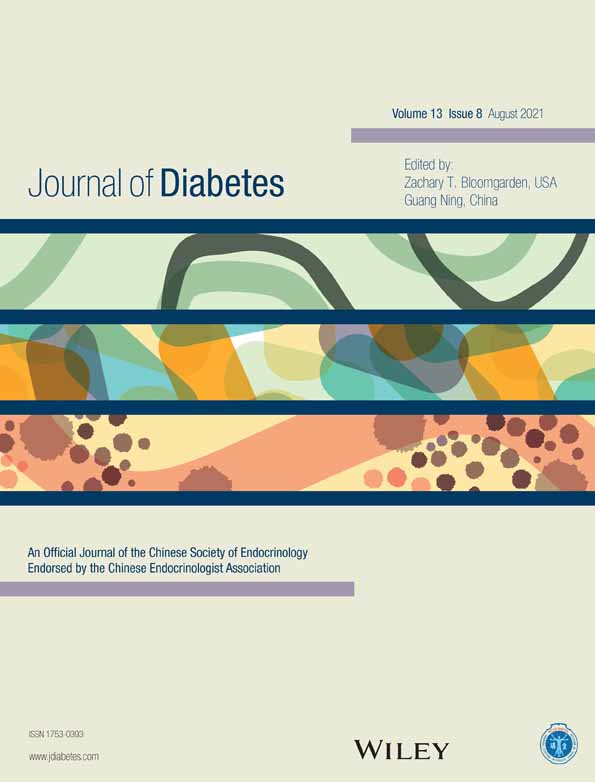The association of TV viewing time with 2-hour plasma glucose is modified by a prudent dietary pattern
谨慎饮食模式改变了看电视时间与2小时血糖的关系
Funding information: NHMRC; Department of Health, Queensland; Pratt Foundation; Novo Nordisk; Merck Sharp & Dohme; Kidney Health Australia; Jack Brockhoff Foundation; Diabetes Australia; Department of Human Services, Victoria; Department of Health, New South Wales; Department of Health, Western Australia; Department of Health, South Australia; Bristol-Myers Squibb; Australian Government Department of Health; the National Health and Medical Research Council
Abstract
enBackground
TV viewing is associated with elevated plasma glucose, but it is not clear whether such associations can be modified by dietary patterns.
Methods
We examined the interactions of TV viewing time and dietary patterns in relation to fasting and 2-hour plasma glucose. Cross-sectional analyses were performed among participants (N = 3081; 44.7% male; mean age 57.8 years) from the 2011 to 2012 Australian Diabetes, Obesity and Lifestyle Study (AusDiab) without clinically diagnosed diabetes or cardiovascular disease. Factor analysis (principal component) was conducted to identify dietary patterns. Multivariable linear regression models were used to examine distinct associations of TV viewing time and dietary patterns with fasting and 2-hour plasma glucose. Dichotomous TV viewing time (low: ≤ 2 h/d vs high: >2 h/d) and quartiles of dietary patterns were further combined to examine the joint associations with plasma glucose.
Results
Three dietary patterns were identified: prudent, Western, and mixed. TV viewing time was positively associated (β = .01, P < .05) and the prudent dietary pattern was inversely associated (β = −.03, P < .05) with log transformed 2-hour plasma glucose. Compared with participants with high TV viewing/lowest prudent dietary pattern, participants with low TV viewing/highest prudent diet had the lowest 2-hour plasma glucose (β = −.05, P = .028). No interactions were found between TV viewing time and the Western dietary pattern, nor the mixed dietary pattern, in relation to either fasting or 2-hour plasma glucose.
Conclusions
Following a prudent dietary pattern may attenuate the adverse effect of TV viewing on 2-hour plasma glucose. Prospective studies and intervention trials are needed to further clarify these relationships.
摘要
zh背景
看电视与血糖升高有关, 但尚不清楚这种联系是否会被饮食模式改变。
方法
我们研究了看电视时间和饮食模式与空腹和2小时血糖之间的相互作用。2011年至2012年的澳大利亚糖尿病、肥胖和生活方式研究(AusDiab)对没有临床诊断的糖尿病或心血管疾病的参与者(N=3081;44.7%男性;平均年龄57.8岁)进行了横断面分析。通过(主成分因子分析确定膳食结构。以多变量线性回归模型检验看电视时间和饮食模式与空腹和2小时血糖的相关性, 将看电视时间分为(低:≤2小时/天与高:>2小时/天)和饮食结构进一步结合在一起, 以分析它们与血糖的联合关系。
结果
确定了三种饮食模式:谨慎饮食模式、西式饮食模式和混合饮食模式。看电视时间与对数转换后2小时血糖呈正相关(β=0.01, P<0.05), 谨慎饮食模式与对数转换后2小时血糖呈负相关(β=−=0.03, P<0.05)。与看电视次数多/谨慎饮食模式最低的参与者相比, 看电视次数少/饮食谨慎程度最高的参与者2小时血糖最低(β=−0.05, P=0.028)。没有发现看电视时间与西方饮食模式之间的相互作用, 也没有发现混合饮食模式与空腹或2小时血糖相关。
结论
遵循谨慎饮食模式可以减轻看电视对2小时血糖的不良影响。需要前瞻性研究和干预试验进一步澄清这些关系。




